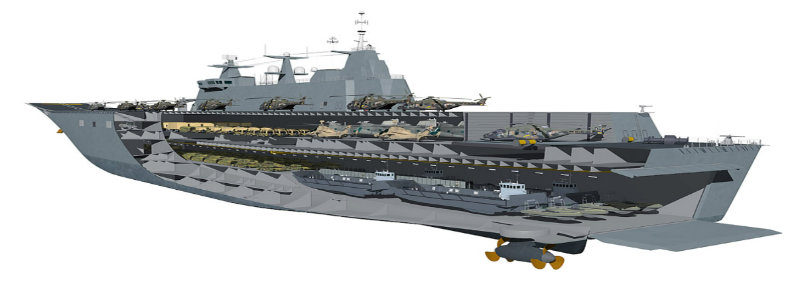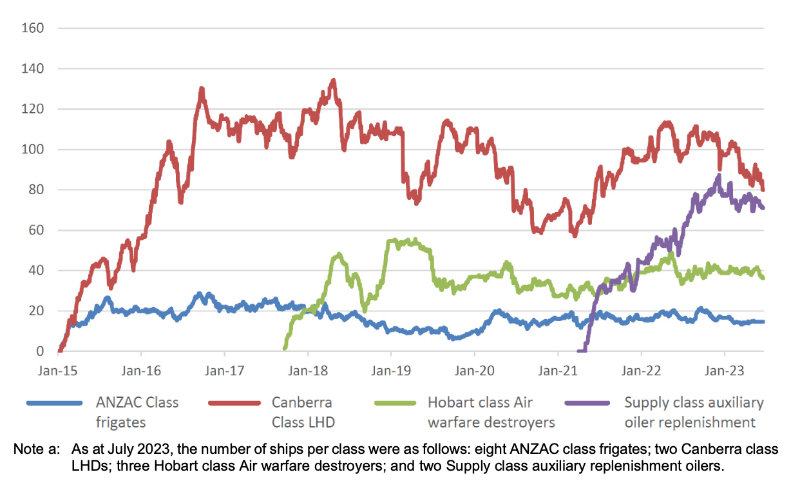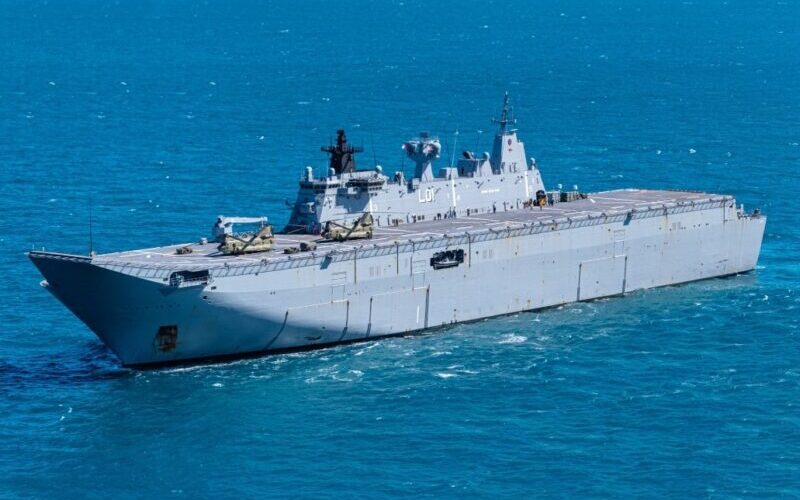As the Navy embarks on the ambitious AUKUS program, the Auditor-General has handed Defence a ‘C minus’ on the Canberra Class ship-building program. Rex Patrick reports.
Ever since the Navy took possession of the two Canberra-class landing Ships at a cost of $1.5B each, they’ve been mired in controversy about reliability.
In a scathing report from the Auditor-General released on Friday, their audit found that the ships’ sustainment has not been effective, or achieved value-for-money, with the ships being hobbled with defects throughout their young lives.
HMAS Canberra was delivered with 6,640 defects and deficiencies, while the second ship of the class, HMAS Adelaide, was delivered with 2,240.
When HMAS Canberra was deemed to have reached its ‘initial operational capability’ in November 2015, it had over 1,000 residual defects and deficiencies.
Landing Helicopter Dock (LHD) Ships
To the untrained eye, they look like aircraft carriers. But they’re not; they’re 27,000-tonne landing ships (referred to as “LHDs”).

Cutaway of a loaded LHD (Source: Defence)
LHDs can carry and land ashore over 1,000 army personnel with weapons, ammunition, vehicles and stores using up to 12 helicopters (not included in the price) and 4 56-tonne landing watercraft (included in the price). They have space for 110 vehicles, including 12 Abrams tanks, and also have onboard medical facilities that include operating theatres, wards, X-ray, and dental facilities.
Operational issues ongoing
The ships were in the media in 2017, with HMAS Adelaide unable to attend exercise Talisman Sabre. LHD sustainment was listed as an underperforming program on the Defence ‘Product of Interest’ list ‘due to ongoing propulsion pod reliability and vibration concerns at delivery, as well as the concerns over maturity of the overall sustainment system’.
The ships received a ‘final operational capability’ declaration in November 2019 with six ‘significant residual deficiencies’.
In 2022 and 2023, the ships suffered total power failures while providing humanitarian assistance and disaster relief support to Tonga and Vanuatu, respectively. Worse than failing the Navy when needed, the incidents caused the Navy reputational damage.
The Auditor-General found that:
“Risks arising from an accumulation of defects and maintenance backlogs over several years have materialised. The substandard condition of the vessels and personnel workforce shortages have resulted in instances of critical failure and impacts to the Navy’s delivery of operational outcomes.”

Number of Urgent Defects, normalised by class of ship (source: Auditor-General)
As of this month, there are 223 urgent defects recorded across the two ships.
Defence Management Failure
In respect of Defence management, the Auditor-General found that:
- Defence did not implement fit-for-purpose planning and value-for-money procurement arrangements to support LHD sustainment.
- Value for money and the intended sustainment outcomes were not achieved through Defence’s procurement processes.
- Sustainment of the LHDs was not managed effectively by Defence through its prime contractor arrangements.
Over the past year, there have been multiple reports of Defence projects being “re-prioritised” (this is a term many now acknowledge as being used in Senate Estimate hearings to avoid “cancelled”) to pay for the AUKUS submarine program.
Adding to that news was a revelation this week that the Defence Department has cut project maintenance and training budgets by 10 per cent to save money to also pay for the AUKUS nuclear-powered submarines and new missiles.
The Audit report reveals further financial issues. Hidden amongst details of how the costs of sustaining the LHDs required more money was a report regarding correspondence in May 2024 prepared by the Chief of Navy,
identifying a shortfall in the Navy of $2.7B over 2023–24 and 2027–28.
There is pressure bearing in on all sides as the Navy pursues its dream of acquiring eight nuclear power submarines at a bankrupting cost of $368B.
Something has to give. Unfortunately, it’s not the AUKUS program.
I just want a Ferrari, sorry, a nuclear submarine, no matter the cost
More money, please
The Audit report also comes at a time when, around the world, there have been calls for increases in national Defence spending. NATO countries have agreed, while Prime Minister Albanese has resisted.
A major problem for Australia is that throwing more money at Defence is, based on past performance, throwing good money after bad. What makes it worse is that most of our money goes overseas; many of the NATO nations can spend it locally.
Over the last decade, Defence has wasted $20B on capabilities not delivered, or capabilities they accepted that did not meet expectations.
And now we see Defence is not faring well on sustainment of their assets, with their expectation that the taxpayer will pay more for the same capability.
And yet, we roll on with no changes inside Defence. No one is accountable, and the taxpayers are expected to just pay the bill.
It may well be that the current geo-strategic uncertainty and outlook require greater spending on Defence; however,
the Government would be well advised to only do that after significant reform has occurred inside Defence.
The old adage “Insanity is doing the same thing over and over and expecting different results” is as true as ever. Maybe it’s about time we do something different.
Dumb Ways to Buy: Defence “shambles” unveiled – former submariner and senator Rex Patrick
Rex Patrick is a former Senator for South Australia and, earlier, a submariner in the armed forces. Best known as an anti-corruption and transparency crusader, Rex is also known as the "Transparency Warrior."

